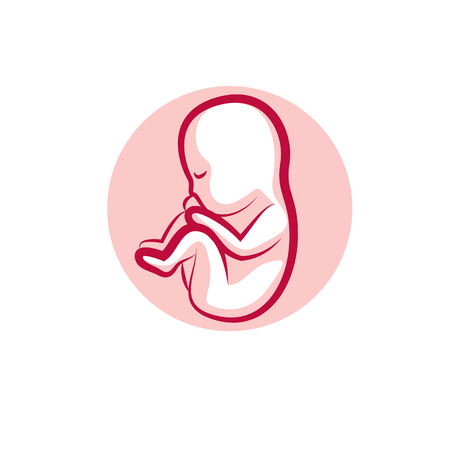1. Managing Swelling: Tips to Reduce Water Retention
Swelling, also known as edema, is a common discomfort during the third trimester of pregnancy. It often affects your feet, hands, and face due to increased fluid retention and pressure on your veins. While some swelling is normal, there are ways to keep it under control.
Stay Hydrated
It might seem counterintuitive, but drinking more water can actually help reduce swelling. When your body is dehydrated, it holds on to extra fluids. Aim for at least 8-10 glasses of water daily to help flush out excess sodium and toxins.
Adjust Your Diet
What you eat plays a big role in managing swelling. Try incorporating these dietary changes:
| Food Group | Best Choices | Avoid |
|---|---|---|
| Fruits & Vegetables | Cucumbers, watermelon, celery (natural diuretics) | Canned or processed vegetables with high sodium content |
| Protein Sources | Lean meats, eggs, beans | Deli meats, heavily salted foods |
| Beverages | Water, herbal teas | Sugary drinks, sodas with high sodium content |
| Dairy | Low-sodium cheese, plain yogurt | Processed cheese, salty snacks like chips |
Incorporate Gentle Movement
Sitting or standing for long periods can make swelling worse. Try these gentle movements throughout the day:
- Ankle Rolls: Rotate your ankles in circles to improve circulation.
- Elevate Your Feet: Whenever possible, prop up your feet to reduce fluid buildup.
- Prenatal Yoga: Gentle stretching can help improve blood flow and reduce swelling.
- Taking Short Walks: Moving around every hour helps prevent fluid from pooling in your lower legs.
Avoid Tight Clothing and Shoes
Tight socks or shoes can restrict circulation and make swelling worse. Opt for loose-fitting clothing and supportive footwear with good arch support.
Prenatal Massage and Cold Compresses
A gentle foot or hand massage can help move excess fluids out of swollen areas. You can also apply a cold compress to particularly swollen areas for relief.
If you notice sudden or extreme swelling, especially in your face or hands, contact your healthcare provider as it could be a sign of preeclampsia.
2. Easing Back Pain: Stretches and Support Strategies
Back pain is a common complaint during the third trimester, but the good news is that there are ways to ease the discomfort. Simple stretches, good posture, supportive footwear, and maternity belts can make a big difference in helping you feel more comfortable.
Prenatal Stretches to Relieve Back Pain
Gentle stretching can help relieve tension in your lower back and improve flexibility. Try incorporating these simple prenatal stretches into your daily routine:
| Stretch | Description |
|---|---|
| Cat-Cow Stretch | Kneel on all fours, arch your back while tucking your chin to your chest (Cat), then slowly lift your head and drop your belly (Cow). Repeat 10 times. |
| Prenatal Child’s Pose | Sit back on your heels with knees wide apart, stretch your arms forward, and rest your forehead on the ground. Hold for 30 seconds. |
| Pelvic Tilts | Lying on your back with knees bent, gently tilt your pelvis upward, flattening your lower back against the floor. Hold for a few seconds and repeat. |
The Importance of Proper Posture
Your growing belly shifts your center of gravity, often leading to poor posture and increased back strain. Here are some tips to maintain proper posture:
- Stand tall: Keep shoulders back and relaxed while avoiding excessive arching of the lower back.
- Sit with support: Use a small cushion or lumbar pillow behind your lower back when sitting.
- Avoid long periods of standing: If you must stand for a while, shift weight between feet or use a footrest.
The Right Footwear Makes a Difference
Your shoes play a big role in back support. High heels can worsen back pain, so opt for comfortable, supportive shoes instead. Look for footwear with:
- Cushioned soles: Helps absorb shock and reduce strain on your lower back.
- Arch support: Prevents overpronation and keeps alignment in check.
- Avoid completely flat shoes: A slight heel can provide better support than totally flat footwear.
Maternity Belts for Extra Support
Maternity belts can help ease back pain by providing extra support to your belly and lower back. They work by redistributing weight and reducing pressure on strained muscles. When choosing a maternity belt, consider:
- Breathability: Look for one made from soft, breathable fabric to avoid discomfort.
- Adjustability: A belt with adjustable straps ensures a snug yet comfortable fit as your belly grows.
- Lumbar support: Some belts offer additional padding for better lower back support.
If youre experiencing persistent or severe back pain, be sure to talk to your doctor or healthcare provider for personalized advice.

3. Sleeping Comfortably: Adjustments for a Restful Night
Getting a good nights sleep in the third trimester can feel like a challenge. As your belly grows, finding a comfortable position becomes harder, and common discomforts like back pain and swelling can make it even more difficult. Here are some tips to help you sleep better during this stage of pregnancy.
Best Sleeping Positions for the Third Trimester
The best sleeping position during late pregnancy is on your left side. This improves blood circulation and reduces pressure on your back and major organs. Sleeping on your right side is also fine, but avoid lying flat on your back for long periods, as it can put pressure on major blood vessels.
Comparison of Sleeping Positions
| Sleeping Position | Benefits | Potential Discomforts |
|---|---|---|
| Left Side | Improves circulation, reduces swelling, supports kidney function | Might need pillow support for comfort |
| Right Side | A good alternative if left side feels uncomfortable | May still put slight pressure on the liver |
| Back | Not recommended in later pregnancy | Puts pressure on major veins, may cause dizziness or breathing issues |
| Stomach | Difficult due to growing belly | Puts strain on neck and spine |
Pillow Placements to Reduce Discomfort
Pillows can provide extra support and help relieve pain while sleeping. Here’s how to use them effectively:
- Beneath Your Belly: Helps support the weight of your baby bump and reduces strain on your back.
- Between Your Knees: Keeps hips aligned and eases lower back pain.
- Behind Your Back: Prevents rolling onto your back while sleeping.
- Under Your Feet: Elevating your feet slightly can reduce swelling.
- Total Body Pillow: A full-body or pregnancy pillow provides support in multiple areas at once.
Tips for Better Sleep Quality
Apart from adjusting positions and using pillows, here are additional ways to improve sleep quality:
- Create a Bedtime Routine: Wind down with relaxing activities like reading or taking a warm bath.
- Avoid Heavy Meals Before Bed: Eating too close to bedtime can cause heartburn.
- Stay Hydrated (But Not Too Late): Drink plenty of water during the day but reduce intake before bed to minimize nighttime bathroom trips.
- Keeps the Room Cool and Dark: A comfortable sleep environment can make a big difference.
- Avoid Screens Before Sleep: Blue light from phones and tablets can interfere with melatonin production.
- If You Cant Sleep, Get Up for a Bit: Instead of tossing and turning, try stretching or listening to calming music before trying again.
Your body is working hard to prepare for your baby’s arrival, so prioritizing rest is essential. By making these adjustments, you can improve sleep quality and wake up feeling more refreshed each day.
4. Dealing with Shortness of Breath and Rib Pain
As your baby grows, your uterus expands upward, putting pressure on your diaphragm and lungs. This can make breathing feel more difficult, especially when youre lying down or after physical activity. Rib pain is also common as the expanding uterus pushes against your ribcage.
Why Does Shortness of Breath Happen?
During the third trimester, your body is working hard to support both you and your baby. Here are some key reasons why breathing may feel harder:
| Cause | Explanation |
|---|---|
| Uterus Expansion | The growing uterus pushes against the diaphragm, reducing lung space. |
| Hormonal Changes | Progesterone increases, making you breathe faster to bring in more oxygen for your baby. |
| Baby’s Position | If your baby is sitting high in your abdomen, it can add extra pressure on your ribs and lungs. |
Tips to Make Breathing Easier
You can take simple steps to reduce discomfort and breathe more easily:
1. Adjust Your Posture
Sit up straight with your shoulders back to give your lungs more room to expand. When standing, avoid slouching and keep your chest lifted.
2. Try Breathing Exercises
- Pursed-Lip Breathing: Inhale deeply through your nose, then slowly exhale through pursed lips.
- Diaphragmatic Breathing: Place a hand on your belly and take deep breaths, focusing on expanding your abdomen rather than lifting your shoulders.
3. Sleep in a Comfortable Position
Lying flat can make breathing harder. Try sleeping slightly propped up with pillows or using a pregnancy pillow for better support.
4. Take It Slow
Avoid overexerting yourself. Take breaks when needed and move at a comfortable pace to prevent breathlessness.
Coping with Rib Pain
If rib pain is making you uncomfortable, these strategies may help:
- Mild Stretches: Gentle side stretches can relieve tension in your ribcage.
- Maternity Support Bands: Wearing a support band can help reduce the pressure on your ribs.
- Icing or Warm Compresses: Applying a warm compress or ice pack can soothe soreness around the ribs.
- Avoid Tight Clothing: Loose-fitting clothes can prevent additional pressure on the ribs.
5. Coping with Fatigue and Preparing for Labor
Feeling exhausted during the third trimester is completely normal. Your body is working hard to support your baby’s growth while also preparing for labor. Managing fatigue through proper nutrition, rest, and mental preparation can help you stay as comfortable as possible during these final weeks.
Prioritizing Rest and Sleep
As your belly grows, finding a comfortable sleeping position can be challenging. Try these tips to improve sleep quality:
- Use a pregnancy pillow: Supporting your belly, back, and legs can help reduce discomfort.
- Sleep on your side: The left side is best for circulation and reducing swelling.
- Avoid heavy meals before bed: This helps prevent heartburn and indigestion.
- Create a bedtime routine: Relaxing activities like reading or taking a warm bath can signal your body that its time to sleep.
Nourishing Your Body for Energy
The right foods can help combat fatigue and keep your energy levels steady throughout the day. Focus on nutrient-rich options such as:
| Nutrient | Benefits | Food Sources |
|---|---|---|
| Iron | Prevents anemia and boosts energy | Spinach, lean red meat, beans |
| Protein | Keeps you full and supports muscle health | Eggs, chicken, Greek yogurt |
| Complex Carbohydrates | Sustains energy levels throughout the day | Whole grains, sweet potatoes, quinoa |
| Healthy Fats | Supports brain function and hormone balance | Nuts, avocados, olive oil |
| Hydration | Keeps you energized and prevents dizziness | Water, herbal teas, coconut water |
Mental Preparation for Labor
The closer you get to your due date, the more important it is to mentally prepare for labor. Consider these strategies:
- Practice relaxation techniques: Deep breathing, meditation, or prenatal yoga can help reduce stress.
- Create a birth plan: Outlining your preferences for labor and delivery can make you feel more in control.
- Tune into positive affirmations: Repeating encouraging statements can boost confidence.
- Talk to experienced moms: Hearing real experiences can ease worries about childbirth.
Pacing Yourself with Daily Activities
Your body is doing a lot of work even when youre resting. To avoid overexertion:
- Take breaks often: Sit down or lie down whenever you feel tired.
- Avoid standing for too long: Use a stool to prop up one foot if youre standing for extended periods.
- Simplify household tasks: Ask for help with chores or use tools like a grabber to avoid excessive bending.
- Pace yourself with exercise: Gentle activities like walking or prenatal stretching can help maintain stamina without draining energy.


